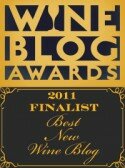The Brauneberger Juffer vineyard lies on the opposite bank to the town of Brauneberg in the middle mosel…….just before the river sweeps past the famous sites of Bernkastel and the vineyards of Wehlen and the Graach. It’s a South-facing vineyard with a central slice called Juffer Sonnenuhr….one of the most prized sites in the region. Juffer means ” old maid” or ” Spinster” and the name harks back to the 18th century. The owner at that time had three daughters who tended the site….they never married and the locals called the vineyard “Juffer” amongst themselves and it seems to have stuck.
The vineyards here lie in blue, gray and brown slate and the site is one of the steepest in the Mosel. The Schloss Lieser estate farms 9.5ha of vineyards in total across Lieser Niederberg Helden, Brauneberger Juffer Sonnenuhr and Brauneberger Juffer. The estate goes back to around the turn of the century when it was one of 99 holdings under the control of Baron von Schorlemer, Germany’s Secretary of Agriculture.
Towards the end of the good Barons tenure the vineyards were somewhat neglected….the estate was sold to bulk producer MeyerHorne in 1975 and then the Baron of Saxony in 1987 but neither seemed to show much interest in bringing the vineyards back to their former glory. Enter Wolfgang Reichel who purchased the vineyards in 1992 with the aim of revitalising the estate.
One of the first things Wolfgang Reichel did was hire Thomas Haag as cellar-master and manager and Thomas purchased the estate in 1997. Plenty of work takes place in the vineyards to keep the yields down and the quality high. The fruit is rigorously selected, gently pressed and aged in old, seasoned oak and stainless steel.
This particular wine is designated ” Erste Lage” ….which if you say it fast enough with a slur, sounds dangerously close to “Thirsty Lager!” …..which could be possibly why I like it so much. In a nutshell…..that’s if you can squish the VDP classification into a nutshell….” Erste Lage” means that the wine comes from one of the great sites in Germany and it will display a little symbol like this on the label.![]() If you’d like to dig a little deeper into the VDP classification there is some more information here and here.
If you’d like to dig a little deeper into the VDP classification there is some more information here and here.
Although coming to grips with the labels can be daunting, German Rieslings are probably one of the most undervalued wine styles in the world….wines with striking purity, character and sense of place can be had at a price which will not put too much of a dent in the wallet……this wine is a prime example.
Pale straw in hue with a tremendously pure nose that isn’t short on the whiffy sulphur aspects. This tends to blow off pretty quickly once it gets a bit of air in so it’s no biggie. Beautiful pure white peach fruits and green apple with supporting flashes of grapefruit and custard apple. There are rich aromas of Brylcream and hair oil along with hints of clotted cream, lemon curd, white flowers, struck flint, minerals and marzipan.
The entry onto the palate is energetic, mouthwatering and pure as can be with flavours of ripe juicy white peach and granny smith apples with undertones of citrus and a tropical fruit flourish. Not sure of the R.S. in this wine but it seems to be close to pushing Spätlese levels of ripeness. There’s plenty of texture and weight on the palate with excellent energy and drive. Hints of lemon pith, creme fraiche, white flowers, slate, minerals and almond paste all rear their head again with that wash of struck flint, sulphidy goodness.
Excellent tension between fruit sweetness and minerally acidity with a crystalline, lip-smacking finish that sings of slate, peach and white flowers. Super, pure Mosel riesling that is tremendous drinking.
Price: $35 – Closure: Cork – Alcohol: 8.5% – Source: Sample – Importer: Eurocentric Wine







I nearly bought this the other day. Glad you recommend it. Wouldn’t mind trying one of their Spatleses though
Hey Jesse….I reckon this is getting up there….or is even at a Spatlese level of ripeness. As a general rule of thumb I’ve always worked on Kabinett coming in at between 30-40 g/L and Spatlese at between 30-60g/L….it would be interesting to find out the figures on this baby.
Kabinetts are around 40-65 these days and spatleses 50-90. This one is usually around 60-65. There are some kabs from 2010 at much higher levels though, where they didn’t deacidify.
Cheers Neville….I still run from a list of RS that DC Flynt MW wrote a while back…..what abvout Feinherb?
Feinherb is typically three parts sugar to one part acid, so 7g/l TA balances against 21g/l r/s. They seem to range from 17-26, with the majority around the 20-21 mark in 07-9 and maybe a bit higher in 2010, depending on whether there was an acid adjustment.